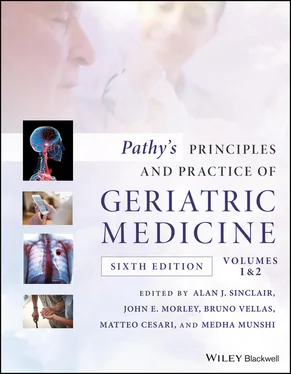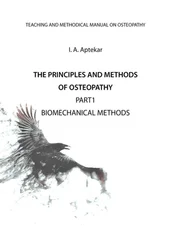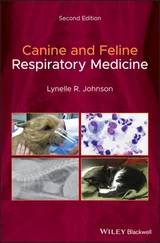Pathy's Principles and Practice of Geriatric Medicine
Здесь есть возможность читать онлайн «Pathy's Principles and Practice of Geriatric Medicine» — ознакомительный отрывок электронной книги совершенно бесплатно, а после прочтения отрывка купить полную версию. В некоторых случаях можно слушать аудио, скачать через торрент в формате fb2 и присутствует краткое содержание. Жанр: unrecognised, на английском языке. Описание произведения, (предисловие) а так же отзывы посетителей доступны на портале библиотеки ЛибКат.
- Название:Pathy's Principles and Practice of Geriatric Medicine
- Автор:
- Жанр:
- Год:неизвестен
- ISBN:нет данных
- Рейтинг книги:3 / 5. Голосов: 1
-
Избранное:Добавить в избранное
- Отзывы:
-
Ваша оценка:
- 60
- 1
- 2
- 3
- 4
- 5
Pathy's Principles and Practice of Geriatric Medicine: краткое содержание, описание и аннотация
Предлагаем к чтению аннотацию, описание, краткое содержание или предисловие (зависит от того, что написал сам автор книги «Pathy's Principles and Practice of Geriatric Medicine»). Если вы не нашли необходимую информацию о книге — напишите в комментариях, мы постараемся отыскать её.
Pathy’s Principles and Practice of Geriatric Medicine
Pathy's Principles and Practice of Geriatric Medicine — читать онлайн ознакомительный отрывок
Ниже представлен текст книги, разбитый по страницам. Система сохранения места последней прочитанной страницы, позволяет с удобством читать онлайн бесплатно книгу «Pathy's Principles and Practice of Geriatric Medicine», без необходимости каждый раз заново искать на чём Вы остановились. Поставьте закладку, и сможете в любой момент перейти на страницу, на которой закончили чтение.
Интервал:
Закладка:
Table 26.8 Prognostic models for ESA response in MDS.
Source: Adaped from Buckstein et al. 67
| Nordic score | ITACA score | ||
|---|---|---|---|
| Variables (1 point each) :Transfusions >2 units per monthSerum erythropoietin >500 units I –1 | Variables (1 point each) :Transfusion independence (either < 1 unit every 8 weeks, over 16 weeks, or < 2 units of blood every 4 weeks)Erythropoietin (EPO) level <100 IU/LIPSS low‐risk | ||
| Score | Probability of response (%) | Score | Probability of response (%) |
| 0 | 74 | 0 | 23 |
| 1 | 23 | 1 | 43 |
| 2 | 7 | 2 | 67 |
| 3 | 85 |
Recombinant erythropoietin (EPO) is given subcutaneously one to three times weekly (starting at a dose of 450 IU/kg, up to 40,000 IU total dose). The choice of ESA regimen varies based on practitioner experience and/or patient preference. However, it’s better to treat with an ESA for at least 6–12 weeks before concluding that the therapy is ineffective. If the response is not adequate after 12 weeks, potential strategies include dose escalation, an increase in administration frequency, or the addition of a myeloid growth factor. There is no demonstrated benefit in crossing over from epoetin to darbepoetin or vice versa.
The combination of EPO and granulocyte‐colony stimulating factor (G‐CSF, 1–2 mg/kg subcutaneously weekly) has been shown to increase the haematocrit, and the number of circulating neutrophils and the combination may be synergistic. A predictive model for response can be utilized to identify patients who have a low, intermediate, or high probability of responding to ESAs and G‐CSF. The combination of G‐CSF and EPO appears to be particularly synergistic in patients with refractory anaemia with ring sideroblasts. 72–74
The risk for thrombosis should be evaluated before initiating ESAs. The risk for thrombosis in patients with MDS appears to be no higher than in age‐matched patients without MDS. Nevertheless, patients should be evaluated for a history of prior thromboembolism, heritable or acquired thrombophilic conditions, prolonged immobility, and other features.
Randomized trials have demonstrated an increased risk of thromboembolic complications and inferior survival in patients with solid tumours receiving ESAs. 75,76Two independent retrospective analyses comparing MDS patients treated with ESAs with MDS patients not treated with ESAs have demonstrated a survival benefit for those treated with ESAs. 66,74This benefit probably arises because they minimize transfusion and hence decrease iron overload. However, another retrospective study demonstrated no survival benefit for MDS patients treated with ESAs. 77The Eastern Cooperative Oncology Group conducted a prospective randomized trial comparing the efficacy and long‐term safety of EPO with or without G‐CSF plus supportive care versus supportive care alone to treat anaemic patients with lower‐risk MDS. 65With a median follow up of 5.8 years, no differences were found in the overall survival of patients in the EPO versus the supportive care arm or the incidence of transformation to acute myeloid leukaemia. Response rates in this trial were 36% in the EPO‐alone arm versus 9.6% in the supportive care arm. One patient developed a deep venous thrombosis in the EPO arm. Hence EPO can be effective in those patients with lower risk MDS, is considered safe and is not associated with an increased risk for mortality or leukaemic transformation.
Transfusion support and iron overload
To lessen isoimmunization, viral infections, and febrile transfusion reactions, leukoreduced and irradiated products are encouraged. In some cases, patients may receive well over 50 units of packed red blood cells. With each unit of blood containing 250 mg of iron, patients may develop iron overload. High levels of iron may lead to secondary haemochromatosis and its resultant adverse hepatic, pancreatic, gonadal, and cardiac effects. 78Iron chelation with deferoxamine 79may be administered to these patients; however, this therapy is difficult. Deferoxamine only chelates ∼25 mg of iron per day, must be administered subcutaneously, and can lead to chronic skin irritation and cataracts. Two oral iron chelators are now available: deferiprone and deferasirox. Deferiprone reduced hepatic and cardiac iron content in thalassaemia patients, but its utility in MDS is limited by the risk of agranulocytosis, and it is not currently approved in the US. 80Deferasirox is administered once daily and is approved for secondary iron overload in transfusion‐dependent anaemias. It has been tested in MDS and found to decrease serum ferritin significantly at one year in heavily transfused MDS patients, but exactly what impact it has on total‐body iron stores or even survival in MDS is unclear. 81Side effects typically include mild nausea and diarrhoea, and careful surveillance of renal and hepatic function should be done as nephrotoxicity and hepatotoxicity have been described. Furthermore, baseline hearing and vision tests are recommended prior to initiating the drug and yearly thereafter because of the risk of auditory and ophthalmological disturbances.
Several international guidelines on iron chelation for MDS have been published. 82‐85Many patients with MDS do not live long enough to develop the complications of iron overload; hence iron chelation as a therapy should be reserved for those patients with lower‐risk disease with an expected survival of more than one year, which is fairly consistent across the various guidelines. Once patients have received anywhere from 20 to 50 units of red blood cells and if the serum ferritin is >1000–2500 ng ml −1, the recommendation is to initiate iron chelation therapy. 80
In addition to requiring periodic red blood cell transfusions, some patients with more advanced MDS may have severe chronic thrombocytopenia with associated bleeding. This can be life‐threatening if significant bleeding occurs in the brain or gastrointestinal tract. Platelet transfusions can be administered but should be given judiciously as many patients become alloimmunized and then fail to respond to subsequent platelet transfusions. 86Similarly to red blood cell transfusions, platelets should be irradiated. 86,87
Alternative strategies to treat anaemia in MDS
In general, lower‐risk MDS patients have been offered supportive care only, especially older adults, as the risk/benefit profile of most active disease‐modifying agents is considered unfavourable. However, newer, less‐toxic agents can be considered in the future even in vulnerable patients, mainly in those with refractory symptoms or higher risk of progression to AML.
Lenalidomide
Lenalidomide, a thalidomide analogue, is approved by the FDA and EMA for the treatment of transfusion‐dependent, low‐ and intermediate‐1‐risk MDS with a del(5q). These patients usually have high endogenous EPO levels and higher clonality rate in progenitors cells that predict a worse response to ESA. Treatment with lenalidomide achieves transfusion independence in up to 70% of patients, with long‐lasting responses (median response duration: two years). In RCTs, a high rate of progression to AML has been reported (40% of patients). 88
A phase 3 placebo‐controlled study investigated lenalidomide in non‐del(5q) patients with RBC‐TD refractory to ESA. Almost 27% of patients treated with lenalidomide achieved RBC transfusion independence for more than eight weeks. 89However, the manufacturer decided not to apply for regulatory approval of lenalidomide for this indication.
Читать дальшеИнтервал:
Закладка:
Похожие книги на «Pathy's Principles and Practice of Geriatric Medicine»
Представляем Вашему вниманию похожие книги на «Pathy's Principles and Practice of Geriatric Medicine» списком для выбора. Мы отобрали схожую по названию и смыслу литературу в надежде предоставить читателям больше вариантов отыскать новые, интересные, ещё непрочитанные произведения.
Обсуждение, отзывы о книге «Pathy's Principles and Practice of Geriatric Medicine» и просто собственные мнения читателей. Оставьте ваши комментарии, напишите, что Вы думаете о произведении, его смысле или главных героях. Укажите что конкретно понравилось, а что нет, и почему Вы так считаете.












